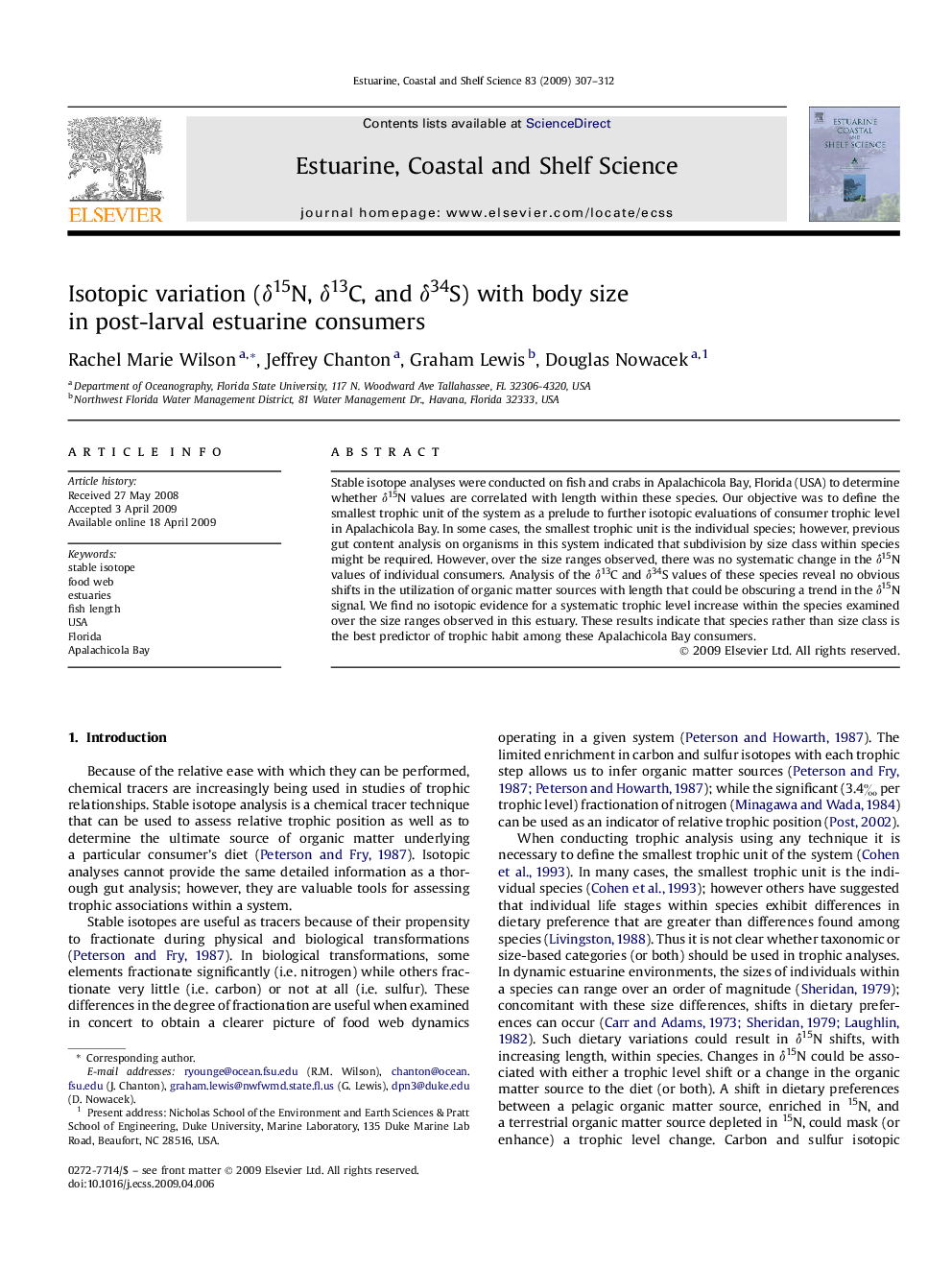| Article ID | Journal | Published Year | Pages | File Type |
|---|---|---|---|---|
| 4541215 | Estuarine, Coastal and Shelf Science | 2009 | 6 Pages |
Stable isotope analyses were conducted on fish and crabs in Apalachicola Bay, Florida (USA) to determine whether δ15N values are correlated with length within these species. Our objective was to define the smallest trophic unit of the system as a prelude to further isotopic evaluations of consumer trophic level in Apalachicola Bay. In some cases, the smallest trophic unit is the individual species; however, previous gut content analysis on organisms in this system indicated that subdivision by size class within species might be required. However, over the size ranges observed, there was no systematic change in the δ15N values of individual consumers. Analysis of the δ13C and δ34S values of these species reveal no obvious shifts in the utilization of organic matter sources with length that could be obscuring a trend in the δ15N signal. We find no isotopic evidence for a systematic trophic level increase within the species examined over the size ranges observed in this estuary. These results indicate that species rather than size class is the best predictor of trophic habit among these Apalachicola Bay consumers.
